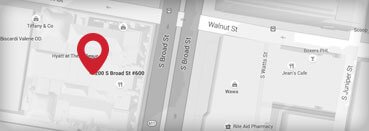Section 510 of the Employment Retirement Income Security Act (ERISA) prohibits employers from intentionally interfering with employee benefits, such as by discharging an employee to prevent his or her pension benefits from vesting. Specifically, Section 510 provides in part:
It shall be unlawful for any person to discharge, fine, suspend, expel, discipline, or discriminate against a participant or beneficiary for exercising any right to which he is entitled under the provisions of an employee benefit plan . . . , or for the purpose of interfering with the attainment of any right to which such participant may become entitled under the plan[.]”
29 U.S.C. § 1140. (Although beyond the scope of this post, employers should be aware that Section 510 also protects plan participants from retaliation for giving information or testifying in any inquiry or proceeding relating to ERISA). Congress enacted Section 510 “primarily to prevent unscrupulous employers from discharging or harassing their employees in order to keep them from obtaining vested pension benefits.” Dewitt v. Penn-Del Directory Corp., 106 F.3d 514, 522 (3d Cir. 1997). An employer violates Section 510 when it “acts with the specific intent to interfere with an employee’s [present or future] right to benefits.” Eichorn v. AT&T Corp., 248 F.3d 131, 149 (3d Cir. 2001). Where such a violation is established, although the employee is not entitled to compensatory or punitive damages, he or she may obtain “appropriate equitable relief” to redress the violation or to enforce the terms of the plan, such as reinstatement and restitution.
As is often true in other employment discrimination contexts, typically there is no “smoking gun” evidence that an employer made a conscious decision and specifically intended to interfere with an employee’s attainment of pension eligibility or additional benefits; in the vast majority of cases, an employee must rely on circumstantial evidence to satisfy his or her evidentiary burden. In the absence of direct evidence, Section 510 claims are evaluated under the same burden-shifting framework (the “McDonnell-Douglas” analysis) applied in other employment discrimination contexts, such as claims of discrimination on the basis of race under Title VII and claims of discrimination on the basis of age under the Age Discrimination in Employment Act.
Under this burden-shifting analysis, the plaintiff-employee must initially establish a prima facie case under Section 510 by producing evidence that shows: (1) prohibited employer conduct (e.g., discharge or discrimination), (2) taken for the purpose of interfering, (3) with the attainment of any right to which the employee may become entitled. Dewitt v. Penn-Del Directory Corp., 106 F.3d 514, 522 (3d Cir. 1997). While the employee’s initial burden is not a particularly onerous one, conclusory, unsupported allegations made upon information and belief will not suffice. If the employee makes a prima facie showing, a rebuttable presumption is created that the statute has been violated, and the burden of production shifts to the employer to articulate a legitimate, nondiscriminatory reason for the challenged conduct. Jakimas v. Hoffmann-La Roche, Inc., 485 F.3d 770, 785 (3d Cir. 2007). An employer’s failure to rebut the presumption will entitle the employee to judgment in his or her favor, but cases in which the employer is unable to articulate any legitimate, nondiscriminatory reason are few and far between. Gavalik v. Continental Can Co., 812 F.2d 834, 853 (3d Cir. 1987). So long as the employer has carried its burden of production, the presumption drops and the burden shifts back to the employee to prove by a preponderance of the evidence that the rationale articulated by the employer is merely pretextual and interfering with the employee’s entitlement to benefits was the “determinative influence” driving the employer’s actions. Jakimas, 485 F.3d at 785. The employee may demonstrate pretext “either directly by persuading the court that a discriminatory reason more likely motivated the employer or indirectly by showing that the employer’s proffered explanation is unworthy of credence.” Gavalik v. Continental Can Co., 812 F.2d 834, 853 (3d Cir. 1987). He or she may rely upon the same evidence constituting his or her prima facie case or introduce new evidence in order to satisfy this ultimate burden of proof.
Although an employee need not prove that interference with his or her entitlement to benefits was the sole basis for the adverse employment action, he or she must demonstrate that the employer had the specific intent to violate ERISA; proof of incidental loss of benefits as a result of an adverse employment action will not constitute a violation of Section 510. Dewitt, 106 F.3d at 522. The Third Circuit has explained:
Where the only evidence that an employer specifically intends to violate ERISA is the employee’s lost opportunity to accrue additional benefits, the employee has not put forth evidence sufficient to separate that intent from the myriad of other possible reasons for which an employer might have discharged him. This kind of deprivation occurs every time an ERISA employer discharges an employee and is not alone probative of an intent to interfere with pension rights. Accordingly, a prima facie case requires additional evidence suggesting that pension interference was a motivating factor.
Id. at 523 (internal quotation marks and citations omitted).
As in other employment discrimination matters, the circumstantial evidence that might tend to suggest that the purpose of an employer’s action was interference with employee benefits must be evaluated on a case-by-case basis. Nonetheless, the courts have identified certain factors the presence of which is often particularly informative. For example, the Third Circuit has stated that “[e]conomic benefits enjoyed by defendants when pension benefits are cancelled can be circumstantial evidence of specific intent, particularly when other circumstances make that cancellation suspicious.” Makenta v. Univ. of Penn., 88 Fed. App’x 501, 505 (3d Cir. 2004); see also Dewitt, 106 F.3d at 523 (observing that “evidence that the savings to the employer resulting from [the plaintiffs’] termination were of sufficient size that they may be realistically viewed as a motivating factor”). On the other hand, however, the mere fact that the employer enjoyed certain economic benefits as a result of the interference with employee benefits does not, in and of itself, constitute sufficient evidence of intent to establish a prima facie case. Balmat v. CertainTeed Corp., 338 Fed. App’x 256, 260 n.1 (3d Cir. 2009). Similarly, termination of a long-time employee shortly prior to the vesting of that employee’s benefits may be revealing, but is not per se proof of specific intent to interfere. Thus, in Dewitt, 106 F.3d at 523, the mere fact that the plaintiff was terminated near the end of the year, two weeks prior to the “Valuation Date”—the date as of which a plan participant must be employed as a condition to receipt of the benefits thereunder—standing alone, was insufficient to support a Section 510 claim.
Employers, fiduciaries, and plan administrators are best advised to not to interfere with employees’ attainment of benefits without good cause. Employers who discharge or otherwise take adverse employment actions against an employee resulting in such interference run the risk of having to defend costly and time-consuming litigation, even where the challenged action in fact derives solely from a legitimate, nondiscriminatory business decision. Certain preemptive measures may, however, bolster the employer’s rationale for challenged conduct should litigation ensue, and, where truly seamless, may avert a lawsuit.
Employers, fiduciaries, and plan administrators are urged to contact qualified counsel when handling employment matters implicating ERISA, particularly those in which an employee’s attainment of benefits may be compromised.








